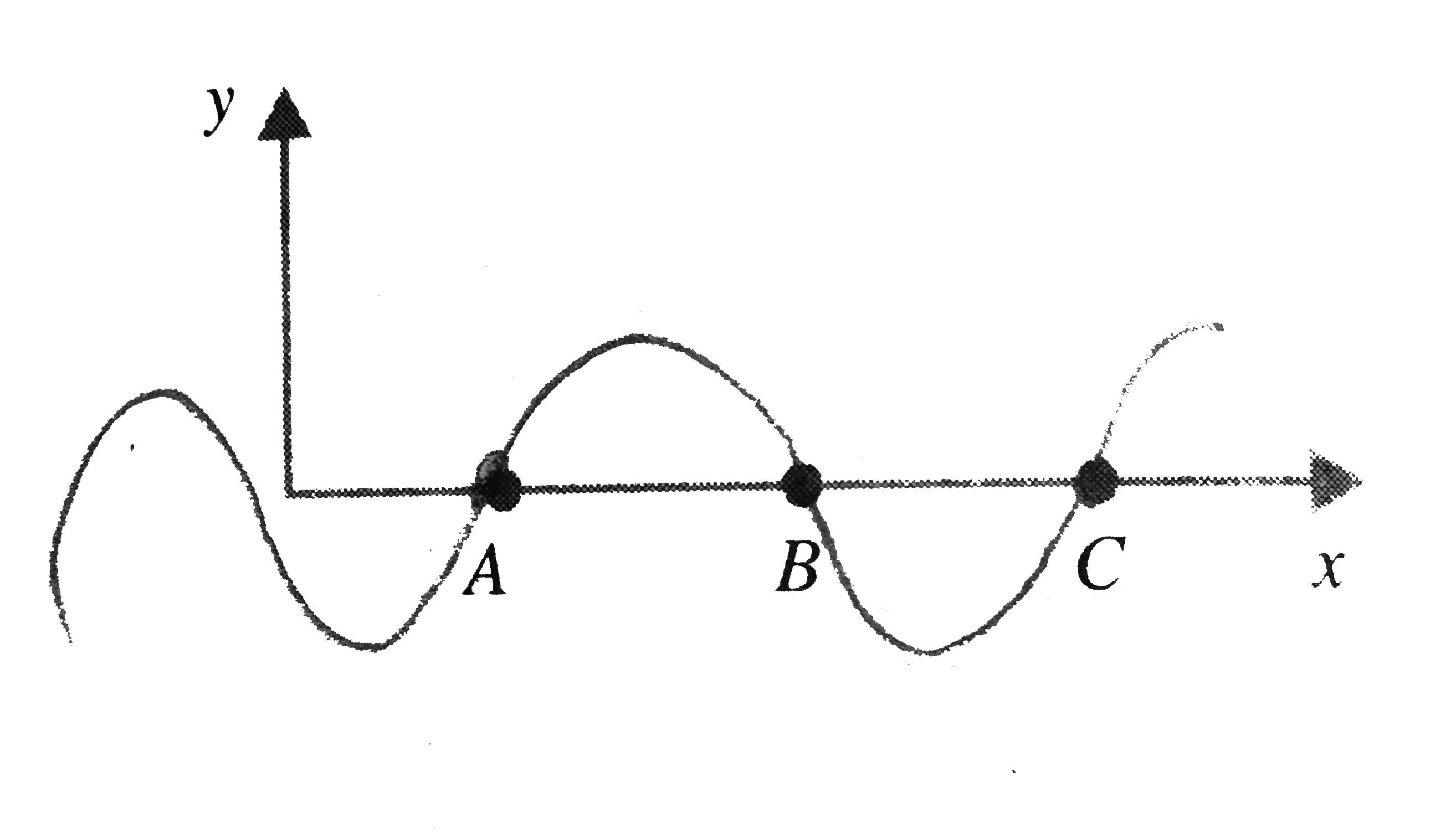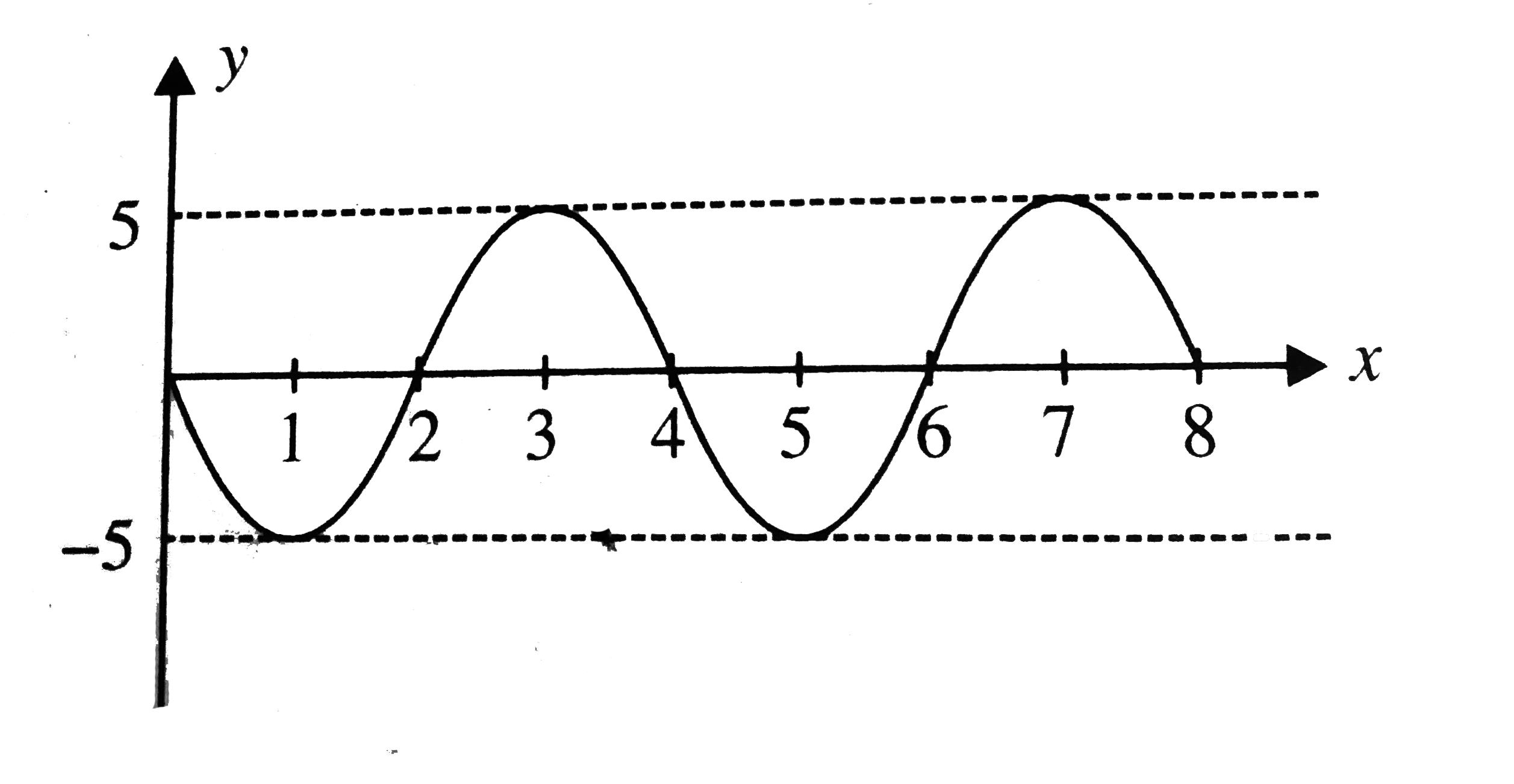Complete Solutions to Illustration of chapter TRAVELLING WAVES of Class 11 book with complete answers and questions
| Class 11 | PHYSICS |
| Chapter | TRAVELLING WAVES |
| CENGAGE PHYSICS | Illustration |
| Number Of Questions | 28 |
| Academic Year | 2023-24 |
A sinusoida wave is travelling along a rope. The oscillator that generates wave completes 40.0 vibration in 30.0 s. also, a given 'maximum' travels 425 cm along the rope in 10.0 s. what is the wavelength of the wave ?
02:33View SolutionA wave pulse is travelling along +x direction on a string at `2 m//s`. Displacement y (in cm ) of the parrticle at x=0 at any time t is given by `2//(t^(2)+1)`. Find
(i) expression of the function y=(x,t),i.e., displacement of a particle at position x and time t.
Draw the shape of the pulse at t=0 and t=1 s.08:16View SolutionA pulse moving to the right along the x-axis is represented by the wave function
where x and y are measured in cedntimetres and t is measured in seconds. Find expression for the wave function at `t=0, t=1.0 s, and t=2.0 s` and plote the shape of pulse at these lines.09:21View SolutionAt t=0, transverse pulse in a wire is described by the function
`y=(6)/(x^(2)+3)`
where x and y are in metres. Write the function `y(x,t)` that describe this plus if it is travelling in the positive x-direction with a speed of `4.50 m//s`.02:25View SolutionA wave is travelling along X-axit. The disturbance at x=0 and t=0 is `A//2` and is increasing. Where A is amplitute of the wave. If `y=A sin(kx-omegat+emptyset)`, deetemine the initial phase `empyset`.
04:26View SolutionA wave travelling along X-axis is given by
`y=2(mm) sin (3t-6x+pi//4)`
where x is in centimetres and t in second. Write the phases and, hence, the find the phase difference between them at t=0 for two points on X-axis, `x=x_(1)=pi//3` cm and `x=x_(2)=pi//2` cm.04:13View SolutionTwo sinusoidal waves in a string are defined by the function `y_(1)=(2.00 cm) sin (20.0x-32.0t)` and `y_(2)=(2.00 cm) sin (25.0x-40.0t)` where `y_(1), y_(2)` and `x` are in centimetres and `t` is in seconds.
(a). What is the phase difference between these two waves at the point `x=5.00 cm` at `t=2.00 s ?`
(b) what is the positive `x` value closest to the original for which the two phase differ by `+_ pi at t=2.00 s?` (That os a location where the two waves add to zero.)05:44View SolutionA,B and C are the three particles of a medium which are equally sparated and lie along the x-axis. When a sinusoidal transverse wave of wavelength k propagates along the x-axix, the following observation are made:
(i) A and B have the same speed. (ii) A and C have the same velocity.
Find (a) the minium distance between A and B and (b) the minimum distance between A and C.
 02:49View Solution
02:49View SolutionA sinusoidal wave travelling in the positive x-direction has an amplitude of `15.0 cm`, a wavelength of `40.0 cm` and a frequency of `8.00 Hz. The vertical displacement of medium at t=0 and x=0 is also 15 cm as shown in figure.

(a) Find the angular wave number `k`, period `T`, angular frequency `omega` and speed `v` of the wave.
(b) Write a general expression for wave function.03:54View SolutionA wave is describe by `y=(2.00 cm) sin (ks-omegat)`, where `k=2.11 rad//m, omega =3.62 rad//s, x is in metres, and t is in seconds. Determine the amplitude, wavelength, frequency, and speed of the wave.
05:07View SolutionIf the displacement relation for a particle in a wave is given by `y=5 sin ((t)/(0.04)-(x)/(4))`, determine the maximum speed of the particle in SI units.
02:00View SolutionVerify that wave function
`(y=(2)/(x-3t)^(2)+1)`
is a solution to the linear wave equation, x and y are in centimetres.05:09View SolutionThe wave function for a travelling wave on a taut string is
`y(x,t)=(0.350 m)sin(10pit-3pix+pi//4)`. (SI units)
(a) what is the speed and direction of travel of the wave ?
(b) what if the verticaly position of an element of the string at `t=0, x=0.100 m?`
(c ) what is the wavelength and frequency of the wave?
(d) waht is the maximum transverse speed of an element of the string?04:06View Solution(a) writ the expression for y as a function of x and t for a sinusoidal wave travelling along a rope in the neagative x direction with the folllowing characteristics: A =8.00 cm , `delta=80.0 cm,f=3.00 Hz`, and `y(0,t)=0 at t=0`, (b) write an expression for y as a function of x and t for the wave in part (a) assuming that y(x,0)=0 at the point x=10.0 cm.
05:35View SolutionGiven the equetion for a wave on a string
`y=0.03 sin(3x-2t)`
where y and x are in meters and t is in seconds.
(a). At t=0, what are the values of the displacement at x=0,0.1 m,0.2 m, and 0.3m ?
(b). At x=0.1 m what are the values of the displacement at t=0,0.1 s, and 0.2 s?
(c ) what is the equetion for the velocity of oscillation of the particles of the string?
(d). what is the maximum velocity of oscillation?
(e). what is the velocity of propagation of the wave?07:55View SolutionA plane progressive wave is give by `x=(40 cm) cos (50pit-0.02piy)` where y is in centimetres and t in seconds. What will be the particle velocity at `y=25 cm "in time" `t=1//200 s?
03:03View SolutionShows the shape of a progressive wave at time `t=0`. after a time `t=(1)//(80)`, the particle at the origin has its maximum negative displacement.if the wave speed is `80` units maximum negative displacement. If the wave speed is `80` units, then find the equation of the progressive wave.
 .03:36View Solution
.03:36View SolutionA taut string having tension 100 N and linear mass density `0.25 kg//m` is used inside a cart to generate a wave pulse starting at the left end, as shown. What should be the velocity of the cart so that pulse remains stationary w.r.t. ground.
01:25View SolutionTransverse waves travel with a speed of `20.0 m//s`in a string under a tension of 6.00 N. what tension is requared for a wave speed of `30.0 m//s` in the same string?
02:23View SolutionAn 80.0 kg hiker is trapped on a mountain ledge following a storm. A helicoptar rescuse the hiker by hovering above him and lowering a cable to him. The mass of the cable is 8.00 kg, and its length is 15.0 m. A sling of mass 70.0 kg is attached to the end of the cable. the hiker attaches himself to the sling, and the helicopter then accelerates upward. terrified by hanging from the cable in midair, the hiker tries to singnal the pilot by sending transverse pulses up the cable. a pulse takes 0.250 s to travel the length of the cable. what is the acceleration of the helicopter?
08:43View SolutionA rope of total mass m and length L is suspended vertically. Show that a transverse pulse travels the length of the rope in a time interval `Deltat=2sqrt(L//g`. Sugestion: first find an expression for the wave speed at any point a distance x from the lower end by considering the rope's tension as resulting from the weight of the segment below that point.
03:42View SolutionIt is stated in the previous problem that a pilse travels from the bottom to the top of a hanging rope of length L in the time interval `Delta=2sqrt(L/g)`. Use this result to answer the following question. (It is not neccesary to set up any new integrations.) (a) over what time interval does a pulse travel halfway up the rope? Give your answer as a fraction of the quantity `2sqrt(L/g)`. (b) A pulse starts travelling up the rope. how far it travelled after a time interval `sqrtL/g)`?
06:15View SolutionAn aluminium wire is clamped at each end and under zero tension at room temperature. Reducing the tempreture, which results in a decrease in the wire's equilibrium length, increase the tension in the wire. What strain `((DeltaL//L))` rejults in a transverse wave speed of `100 m//s`? Take the cross-seectional area of the wire to be `5.00xx10^(-6)m^(2)`, the density to be `2.70xx10^(3)` kg//m^(3)`, abd young's modulus to be `7.00xx10^(10)N//m^(2)`.
04:50View SolutionA transverse wave of wavelength 50 cm is travelling towards+vex-axis along a string whose linear density is `0.05 g//cm`. The tension in the string is 450 N. At t=0,the particle at x=0 is passing through its mean position wave. The amplitude of the wave is 2.5 cm.
05:22View SolutionA taut string for which `mu = 5.00 xx 10^(-2) kg//m` under a tension of `80.0N`. How much power must be supplied to the string to generate sinusoidal waves at a frequency of `60.0 Hz` and an amplitude of `6.00 cm`?
01:46View SolutionTwo waves in the same medium are represented by y-t curves in the
 . Find the ratio of their average intensities? 02:34View Solution
. Find the ratio of their average intensities? 02:34View SolutionSinusoidal waves 5.00 cm in amplitude are to be transmitted along a string that has a linear mass density of `4.00xx10^(-2)kg//m`. The source can deliver a macimum power of 300 W and the string is under a tesion of 100 N. what is the highest frequancy at which the source can operate?
03:15View SolutionA sinusoidal wave on a string is described by the wave function where x and y are in metres and t is in seconds. The mass per unit length of this string is `12.0 g//m`. Determine (a) the speed of the wave, (b) the wavelength, (c ) the frenquecy and (d) the power transmitted to the wave.
04:10View Solution
Illustration questions and complete solutions for chapter TRAVELLING WAVES of CENGAGE PHYSICS (ENGLISH) of Class 11
